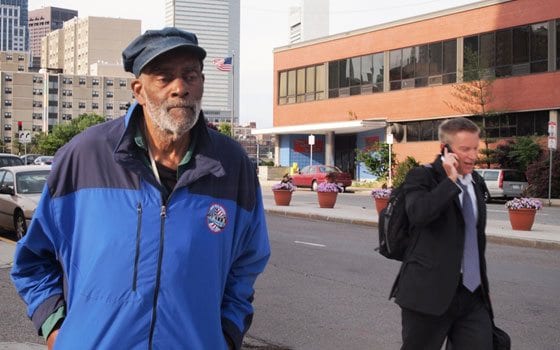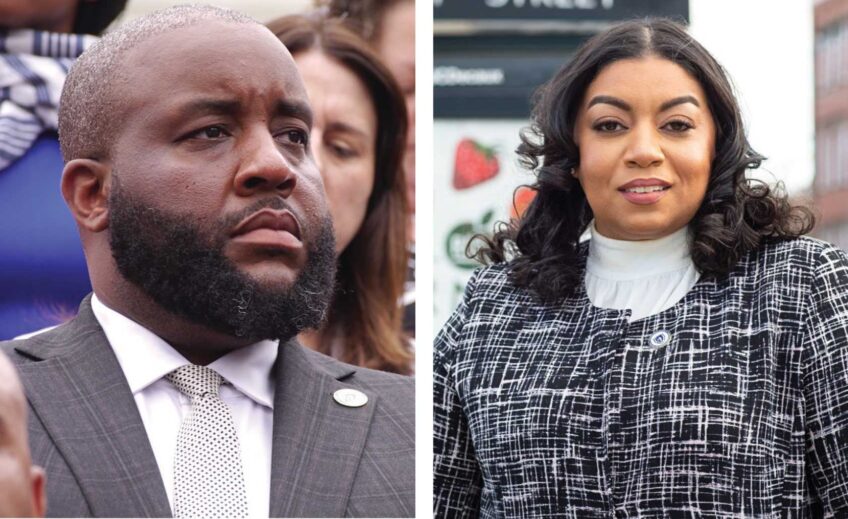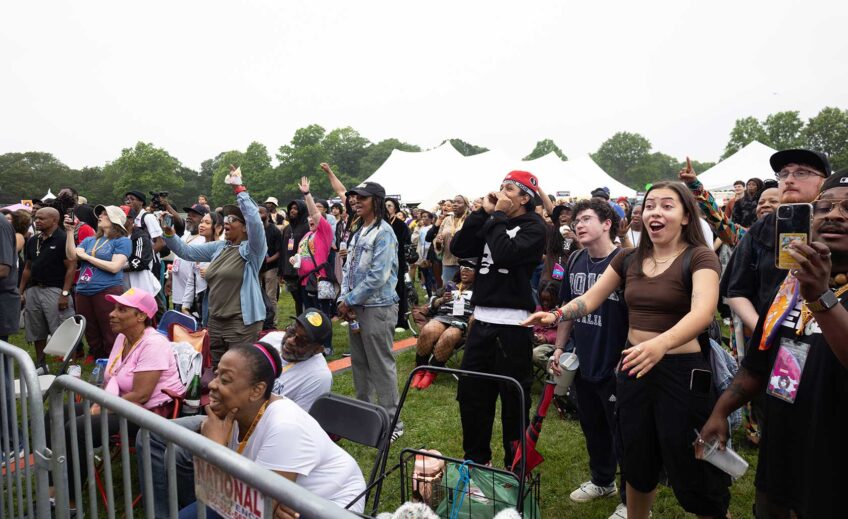
A Newton-based developer envisions 274 luxury apartments and 64,000 square feet of upscale shops for the 60 acre parcel of land where the Boston Herald’s headquarters now stand.
But when former state Rep. Mel King looks at the site, he sees something radically different: his childhood home.
Standing in front of the tabloid’s 1950s brick building, he points out the former locations of the streets that were leveled in 1952 by the Boston Redevelopment Authority wrecking ball: Way St., Seneca, Oneita, Genesee, Oswego, Rochester.
“Most of the buildings here were apartments with four or five stories,” he says, looking at the industrial wasteland that emerged out of the city’s second major Urban Renewal project. “There were churches. There were fruit stands and a fish market on the corner where I lived. An Italian bakery, two Jewish bakeries, an Armenian store, butcher shops.”
King first learned of the imminent demise of his New York Streets neighborhood in a letter his family sent him in 1948, when he was away at Claflin College in South Carolina. Included in the letter was a newspaper clipping from the Herald Traveler — now the Herald — declaring that the New York Streets area was a slum.
“They called it Skid Row,” he says. “I learned something important from that: If they name you, they can claim you. If you let them define you in negative ways, they can devalue you.”
The slum designation assigned to the New York Streets area was a federal classification that legitimized the BRA’s plans to demolish the housing in the densely populated, diverse South End neighborhood. The city first used the designation in the West End, a downtown neighborhood with a similar mix of blacks, Jews, Italians and other European immigrants.
Under the BRA plan, the area became an industrial area, with the Herald headquarters, a large storage facility and several manufacturing plants. One of the few buildings to survive housed a greeting card company and later became the headquarters of the tech firm Teredyne.
Other than Albany Street, all the New York Streets names were erased. The new street names assigned to the area include Herald and Traveler streets.
In its heyday, the New York Streets area was an enclave of the South End bordered by the Boston and Albany Railway yard (now Interstate 90) Washington, Dover (re-christened East Berkley) and Albany streets. Churches in the area provided food, shelter and services to a small, but lively homeless population in the area. A number of bars provided them with spirits.
King says the Herald Traveler focused on the drunks in making the case for demolition.
“They defined the neighborhood by that small number of people,” he comments.
The slum designation allowed the BRA to declare eminent domain and tap federal resources to acquire property and demolish it. A series of articles in the Traveler detailing alleged slum conditions in the neighborhood didn’t help the residents’ case.
But it certainly paved the way for the newspaper to acquire the 6.2-acre property it now plans to sell, as King points out in his autobiographical book, “Chain of Change.”
When King learned of the BRA’s plans to demolish his neighborhood, he could scarcely believe what he was reading.
“I was alarmed,” he recalls. “I thought I lived in a great neighborhood. I had a lot of friends and great relationships.”
King’s childhood memories of the New York Streets neighborhood include swimming in the Fort Point Channel between the Dover Bridge (now the West 4th Street Bridge) and the Broadway Bridge and fishing there. He and his friends played sports next to the train tracks near the South Bay.
“It was all cinders,” he says. “We played baseball and football.”
As a college student, King says he felt powerless to fight the BRA’s planned demolition of his community. When he graduated in 1951, his family had already relocated. King went to graduate school at Boston Teachers College.
Then he began working as an organizer with the Lincoln House, a settlement house in the Castle Square section of the South End. That area too was facing demolition by the BRA. But King and the Castle Square residents fought back. Instead of clearing land for industrial use as was the case in the New York Streets area or luxury apartments like those in the West End, the Castle Square residents demanded that the BRA designate the land for new housing for low-income people.
“The work we did there started the kind of thinking that led to Tent City,” King said, referring to a South End site where tenements were torn down in the 1960s. There, King led protests, staging sit-ins and building an actual tent city where protesters occupied the vacant lots city planners wanted to use for industrial use and parking.
In the 1980s, 269 units of housing were built, with 25 percent reserved for low-income families, 50 percent for moderate-income and 25 percent for market rate renters.
In the 1960s, King made several runs for the School Committee. Then, in 1973, he was elected to the state House as a representative of the 9th Suffolk District, a seat he held until 1982. In 1983 he ran for mayor.
Throughout his career in politics and activism, he remembered his childhood home and how city planners erased it from the map.
King recalls meeting with an editor at the Herald — the name escapes him — during the 1983 race for mayor.
“I said, ‘You know, we’re neighbors,’ ” King recalls. “He said, ‘You mean you live in Danvers?’ I said, ‘No, you’re sitting where my house used to be.’ ”







